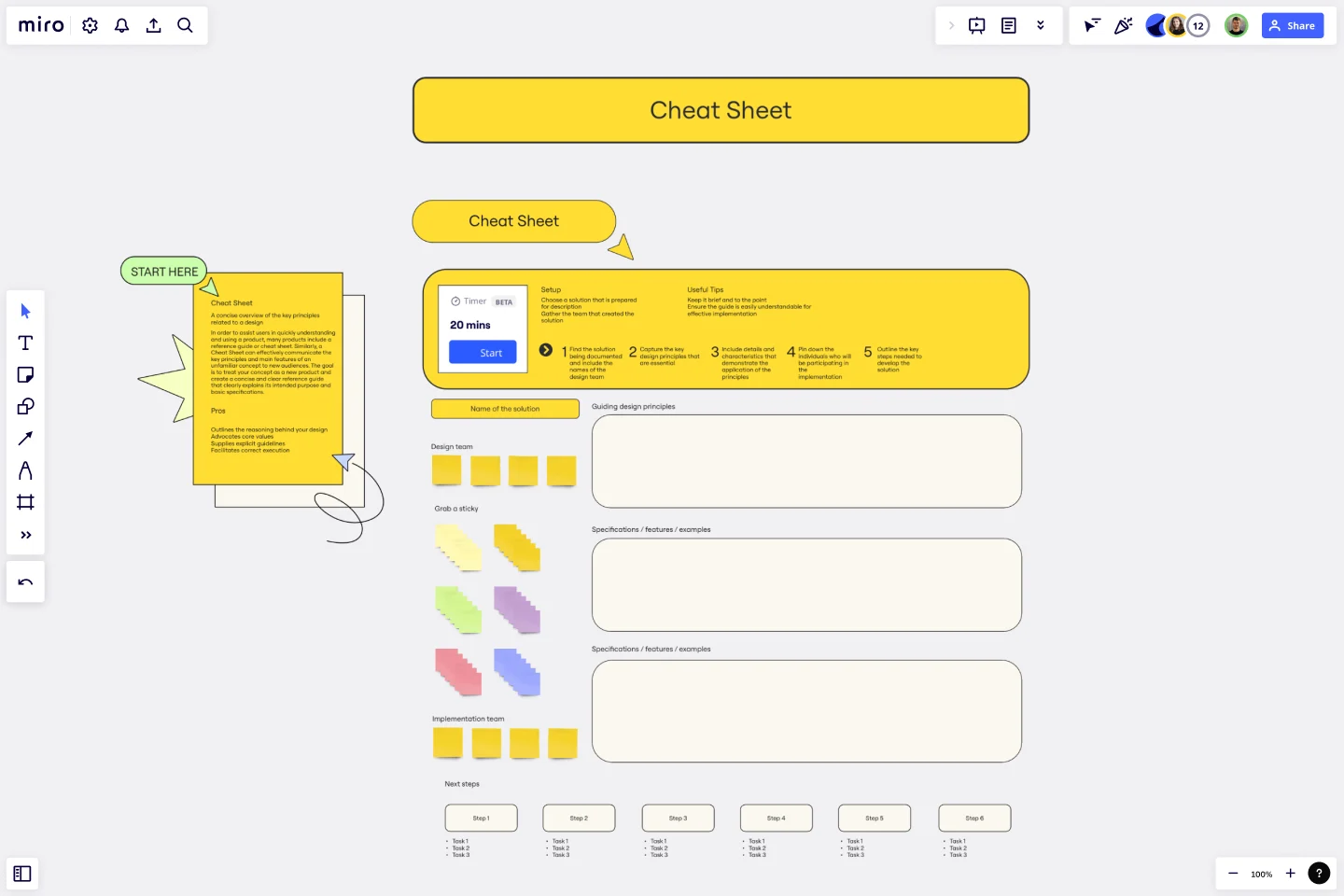Cheat Sheet Template
Create a concise overview of the key principles related to a design with the Cheat Sheet Template.
About the Cheat Sheet Template
Many products come with a reference guide or cheat sheet to assist users in quickly understanding and using a product. Similarly, a Cheat Sheet can effectively communicate an unfamiliar concept's key principles and main features to new audiences. By treating your concept as a new product and creating a concise and clear reference guide, you can provide a comprehensive understanding of its intended purpose and basic specifications.
Creating a reference guide with the Cheat Sheet Template aims to give users the information they need to use a product or understand a concept quickly and easily. By presenting the information clearly and concisely, users can quickly find the information they need and avoid frustration or confusion.
Benefits of using the template
Outline the reasoning behind your design.
Advocate core values.
Supply explicit guidelines.
Facilitate correct execution.
How to use the template in Miro
Find the solution being documented and include the names of the design team.
Capture the key design principles that are essential.
Include details and characteristics that demonstrate the application of the principles.
Pin down the individuals who will be participating in the implementation.
Outline the key steps needed to develop the solution.
Setup
Choose a solution that is prepared for description.
Gather the team that created the solution.
Useful tips
Keep it brief and to the point.
Ensure the guide is easily understandable for effective implementation.
Get started with this template right now.
Journey Map To Plot the Customer Experience
Works best for:
Customer Journey Map
A journey is a tool to map out the customer experience of (a part of) your product/service in a visual way.
Empathy Map Canvas
Works best for:
Market Research, Research & Design
The Empathy Map Canvas is a versatile tool for visualizing user behavior and emotions. It helps teams capture insights about what users see, hear, think, and feel. Use this template to build empathy and ensure your product meets real user needs.
Purple Sector Empathy Map
Works best for:
Market Research, Research & Design
Purple Sector Empathy Map is an innovative tool for exploring user experiences. By visualizing users' thoughts, feelings, and behaviors, you can create more engaging and user-friendly products. Ideal for teams focused on user experience.
Tell a Great Story
Works best for:
Storyboard
Tell a great story with the Storyboard template. Visualize your narrative using images, notes, and descriptions to map out each scene. This template is perfect for filmmakers, content creators, and marketers looking to craft compelling stories. It helps you organize your thoughts, sequence your story elements, and ensure a cohesive flow. Whether you're planning a video, a marketing campaign, or a presentation, this tool makes storytelling easier and more effective.
Service Blueprint Workshop
Works best for:
Research & Design
The Service Blueprint Workshop by Lidia Olszewska is designed for collaborative service design sessions. This template helps teams visualize service processes, identify pain points, and brainstorm solutions. Use it to align cross-functional teams, improve service delivery, and ensure a seamless customer experience. It's ideal for workshops aimed at service optimization, fostering collaboration, and strategic planning in service design.
Empathy Mapping by Atlassian
Works best for:
Market Research, Research & Design
Atlassian Empathy Mapping is designed to help teams understand user perspectives. By mapping out user experiences, you can identify pain points and opportunities for improvement. This template is ideal for collaborative workshops and user research.
